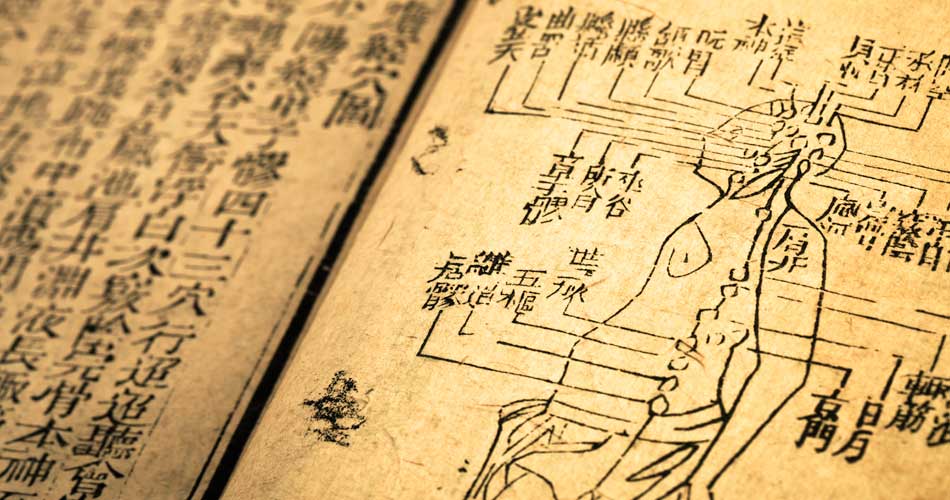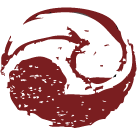
Source: HealthCMI.Com
Acupuncture outperforms drug therapy for the treatment of insomnia. Hangzhou Hospital of Traditional Chinese Medicine researchers compared the efficaciousness of auricular acupuncture with estazolam drug therapy for the treatment of insomnia in senior citizens. Estazolam achieved an 82.9% total effective rate and auricular acupuncture achieved a 91.4% total effective rate. Acupuncture outperformed drug therapy for the improvement of sleep quality, duration, and daytime functioning. Results were determined by analysis of Pittsburgh Sleep Quality Index (PSQI) and Insomnia Severity Index (ISI) scores.
Auricular acupuncture involves the application of filiform needles (1.5 mm length) to specific acupoints located on the outer surface of the ear. Estazolam is a benzodiazepine, a psychoactive drug in the same class as chlordiazepoxide (Librium) and diazepam (Valium). The study involved the selection of 70 patients at the acupuncture department of Hangzhou Hospital of Traditional Chinese Medicine. All patients were diagnosed with insomnia between March 2015 and March 2016. They were randomly divided into an acupuncture treatment group and a drug control group, with 35 patients in each group.
Group Selection Process
The statistical breakdown for each randomized group was as follows. The acupuncture treatment group was comprised of 14 males and 21 females. The average age in the acupuncture treatment group was 68 (±6) years. The average course of disease in the treatment group was 5.37 (±2.66) years. The drug control group was comprised of 16 males and 19 females. The average age in the drug control group was 67 (±7) years. The average course of disease in the drug control group was 5.44 (±3.12) years. For both groups, there were no significant differences in terms of their gender, age, and course of disease prior to initiation of the investigation.
Inclusion criteria
All participants were diagnosed with insomnia according to the Chinese Classification and Diagnostic Criteria for Mental Disorders (3rd edition). In addition, patients participating in the study met the following inclusion criteria:
Between 60 – 75 years of age. Did not take any hypnotic drugs or acupuncture treatments within at least 1 week prior to the research start date. Exclusion criteria were applied. This assured that patients participating in the study suffered from primary insomnia and were suitable for auricular acupuncture treatment.
Patients who had the following conditions did not participate in the study:
Insomnia secondary due to biologically identified illnesses Severe primary and comorbid cardiovascular, liver, kidney, digestive, or hematopoietic diseases Skin lesions of the auricle Alcohol or psychotropic drug dependence.
Drug and Acupuncture Treatment
For the estazolam group, patients received 1 mg doses of estazolam tablets, orally administered before going to bed for 30 consecutive days. The acupuncture group received auricular press tack intradermal needling at the following auricular acupoints (every other day for a total of 30 days), alternating between left and right sides for each acupoint:
TF4 (Shenmen) AH6a (Jiaogan, Sympathetic) AT4 (Pizhixia, Subcortex) CO15 (Xin, Heart) CO13 (Pi, Spleen) CO10 (Shen, Kidney) LO4 (Chuiqian, Anterior Ear Lobe).
Treatment commenced with patients in a seated position. After disinfection of the acupoint sites, a metal probe tip was used to apply pressure to the local skin for the purpose of identifying sensitive acupoints. Next, the needles were inserted into the prescribed acupoints and were affixed with a piece of adhesive tape. Ear intradermal needles were stimulated (with kneading massage motions) three times per day, with 1 minute of stimulation each time. The interval between each stimulation is at the very minimum of 4 hours.
Scoring
All patients underwent Pittsburgh Sleep Quality Index (PSQI) and Insomnia Severity Index (ISI) assessments before and after treatments. PSQI is a measurement instrument for determining the sleep quality of patients with sleep disorders. PSQI measures seven different aspects of sleep, including subjective sleep quality, sleep latency, sleep duration, habitual sleep efficiency, sleep disturbances, use of sleep medications, and daytime dysfunction. Lower scores in PSQI assessment denote a healthier sleep quality. ISI is a measurement instrument for determining insomnia severity, including measurements of difficulty falling asleep, staying asleep, waking up too early, and daytime dysfunction resulting from lack of quality sleep. Lower scores in ISI assessments denote a lower insomnia severity. After completion of treatment, the efficacy rates for each patient were categorized into 1 of 4 tiers:
Recovery: Improvement of sleep duration. Sleep duration reaching at least 6 hours. PSQI rating reduction of at least 75%. Significantly effective: Improvement of sleep duration. A sleep duration increase of at least 3 hours. PSQI rating reduction of at least 50%. Effective: Improvement of sleep duration. A sleep duration increase of less than 3 hours. PSQI rating reduction of at least 25%. Ineffective: No improvement of sleep duration. PSQI rating reduction of less than 25%.
Results
Estazolam achieved an 82.9% total effective rate. While effective, the downside is that the medication is contraindicated during pregnancy and for patients with severe liver or mental disorders. It is also contraindicated for patients with acute angle-closure glaucoma or those taking clozapine or sodium oxybate. Estazolam cannot be taken with alcohol and may cause memory loss, dizziness, fatigue, dry mouth, upset stomach, headaches, or difficulty with movement and coordination. Auricular acupuncture achieved a 91.4% total effective rate. The downside to acupuncture is that it must be applied by a licensed acupuncturist and may cause minor bruising in some cases.
Basis
The researchers cited independent scientific research finding acupuncture effective for the treatment of insomnia. In addition, they provided a historical context for the selection of acupuncture points administered during the investigation. Needling Shenmen, Jiaogan, and Pishixia nourishes the heart and quiets the shen (spirit). These three acupoints are traditionally indicated for patients with insomnia. Needling Xin, Pi, and Shen regulates the corresponding Zang organs (including the heart, spleen and kidney) and therefore enriches kidney essence, fortify qi and blood, nourish the heart, and quiet the shen. Chuiqian corresponds with the sleep center area in the brain and is indicated for the treatment of insomnia.
The researchers cited the ancient historical roots behind the protocol used in the study. In TCM (Traditional Chinese Medicine), qi and blood depletion and insufficiency of kidney essence may lead to insomnia. It is written in the Ling Shu (The Miraculous Pivot) that “For an elder, there is debilitation of qi and blood, whittling of the flesh, and unsmooth circulation of qi and blood circulation. In the body, qi of five Zang organs contends with each other. Ying qi (nutrient qi) is debilitated, while Wei qi (defensive qi) is quelled. As a result, an elder has a lack of energy in the daytime and has difficulty with sleep at night.” It is also written that “A person with inability to sleep while resting … This is because Zang organs are injured. In this case, if essence is restored to these organs, the person can rest and sleep again.” In this study, the researchers note that “Deficiency of spleen qi may result in the spleen failing to govern movement of qi and blood. This impedes qi and blood circulation to the heart, leading to spirit failing to keep to its abode (the heart). On the other hand, insufficiency of kidney essence may result in malnourishment of the brain. This disturbs the normal function of sense organs and orifices, leading to dizziness, tinnitus, and insomnia.” The researchers add that insomnia treatments for the elderly in TCM focuses on enriching kidney essence, fortifying qi and blood, nourishing the heart, and quieting the spirit.
Acupuncture Research
In a similar finding, Ye et al. conclude that acupuncture improves sleep duration, sleep quality, and reduces relapse rates for depressive insomnia. One study group received acupuncture (every other day for 3 months) and another received mirtazapine (20 mg orally, once per day for 3 months), an antidepressant drug. Acupuncture achieved a 90% total effective rate and mirtazapine therapy achieved a 92.5% total effective rate. The Hamilton Depression Rating Scale (HAM-D) was used to record the results. The primary acupoints used in the study were the following:
Shenmen (HT7) Sanyinjiao (SP6) Yintang (extra) Lin-Peng Wang et al. determined that body style acupuncture outperforms estazolam in their independent investigation.
The researchers used the following acupoints:
Shenting (DU24) Sishencong (EX-HN1) Baihui (DU20) Shenmen (HT7) Sanyinjiao (SP6) The study was a single-blinded, randomized, placebo controlled investigation comparing acupuncture with sham acupuncture and estazolam. True acupuncture produced superior patient outcomes for insomnia patients including improvements in sleep quality and total sleep time.
The researchers note, “The trial implied that verum acupuncture was superior in improving sleep quality and daytime functioning of primary insomnia compared with estazolam and sham acupuncture.”
At the Healthcare Medicine Institute, we have published a steady stream of research finding acupuncture effective for the alleviation of insomnia in both the short and long-term. The aforementioned research confirms what is a prevalent finding across multiple investigations. Acupuncture is safe and effective for the alleviation of insomnia.
References: Liang XM. Clinical Observations on the Therapeutic Effect of Ear Acupoint Thumbtack Needle Embedding on Senile Primary Insomnia [J]. Shanghai Journal of Acupuncture and Moxibustion, 2017, 36 (6).
Ye GC & Yan H. (2014). Therapeutic Observation of Acupuncture for Depressive Insomnia. Shanghai Journal of Acupuncture and Moxibustion. 55(6).
Lin-Peng Wang, Guo, Jing, Cun-Zhi Liu, Jie Zhang, Gui-Ling Wang, Jing-Hong Yi, Jin-Lian Cheng, and R. Musil. “Efficacy of acupuncture for primary insomnia: a randomized controlled clinical trial.” Deutsche Zeitschrift für Akupunktur 57, no. 4 (2014): 31-32.
